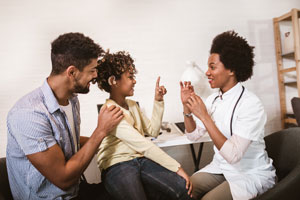 So you’re interested in Deaf culture and want to connect with the larger community. Great! But how do you go about taking that first step?
So you’re interested in Deaf culture and want to connect with the larger community. Great! But how do you go about taking that first step?
Everyone has been in a situation where they feel completely out of place. Maybe it was the first day in a new school or at a new job. These moments, as uncomfortable as they might seem, often provide us opportunities for personal growth. For hearing people, the thought of entering a Deaf space — a place where all conversations happen in American Sign Language— can be a little intimidating. Ultimately, however, stepping outside of ones’ comfort zone is a priceless experience that has the potential to open our minds to a whole new reality.
If you are nervous or shy, just take it slow. A good first step is to get involved in an online community where Deaf people dictate the conversation. This is an excellent way to “get to know” people without feeling too much social pressure. The way you connect with others will depend on your personal and professional interests. Try searching the #Deaf hashtag on Twitter, or find an active community on Facebook or LinkedIn. Follow the National Association of the Deaf (NAD), the Registry of Interpreters for the Deaf (RID), World Federation of the Deaf, Deaf Nation, and Deaf World as a place to get started.
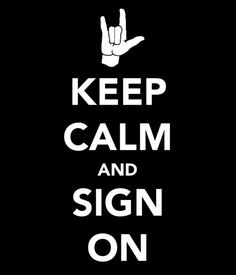 The internet has given deaf people a public voice like never before! From online discussions you can get a feel for the tones people use to communicate with each other, the types of things they find funny, and what issues they find important. Like and share content created by deaf individuals to amplify their voices, and don’t be afraid to follow new people and jump in on discussions if you have something to contribute. Help bring attention to issues that are “hot topics” or in need of support. Pay attention to what is being discussed, what rumors are going around, and what events are coming up in your area.
The internet has given deaf people a public voice like never before! From online discussions you can get a feel for the tones people use to communicate with each other, the types of things they find funny, and what issues they find important. Like and share content created by deaf individuals to amplify their voices, and don’t be afraid to follow new people and jump in on discussions if you have something to contribute. Help bring attention to issues that are “hot topics” or in need of support. Pay attention to what is being discussed, what rumors are going around, and what events are coming up in your area.
Be sure to add some Deaf-created content to your RSS Feed or Blogroll to get educated while exploring the many dimensions of Deaf culture. Follow news and views from d/Deaf/ HoH activist Rikki Poytner, watch the hilarious “Don’t Shoot the Messenger,” or explore any number of other YouTube channels for videos that help bridge the culture gap. “Fridays” is a new ASL web series about two deaf best friends just trying to figure out life and relationships, it’s written and produced by Shoshannah Stern and Josh Feldman. For cute and totally relevant comics about Deaf and CODA life, follow “That Deaf Guy” Matt Daigle.
Getting involved with the online community will make it easier to take the next step, which is to get out and meet new people! Some people find that using Meetup, a site and mobile app that allows users to form groups and arrange meetings, offers a comfortable transition between online discussion and in-person engagement. Look for a Meetup group in your area and, if there isn’t one, create a group! You never know, there might be other likeminded individuals who are looking for the exact same thing.
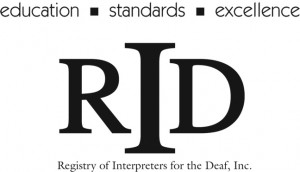 If meeting people off the internet isn’t up your alley, there are plenty of other options to connect with the Deaf community. Try Google searching for a Deaf coffee chat or Deaf club in your city. If you live near Rochester, NY, check out the National Technical Institute of the Deaf (NTID) campus. Or, if you live near Washington, DC, look for events at Gallaudet University. Don’t be afraid to reach out to local deaf organizations or the local interpreter training program for more information, you will find that most people are happy to help.
If meeting people off the internet isn’t up your alley, there are plenty of other options to connect with the Deaf community. Try Google searching for a Deaf coffee chat or Deaf club in your city. If you live near Rochester, NY, check out the National Technical Institute of the Deaf (NTID) campus. Or, if you live near Washington, DC, look for events at Gallaudet University. Don’t be afraid to reach out to local deaf organizations or the local interpreter training program for more information, you will find that most people are happy to help.
Attending Deaf Expos is an awesome way to meet new people and immerse yourself to an environment where ASL is the primary language. These expos are growing in popularity, making their way from major cities to more regional venues. Learn about all the services, events, and cool things happening within the Deaf community. Another option is to find out if there is an ASL Slam or Deaf cultural events coming up nearby. Maybe there’s a monthly Deaf coffee meetup, or another type of casual social meeting that is open to the public. There are deaf-owned and operated restaurants popping up in major North American cities, such as Mozzeria in San Francisco, Signs in Toronto, and DeaFined in Vancouver where you communicate with mostly deaf waitstaff. Remember that it’s perfectly natural to be nervous the first time you do something, but that should never prevent you from seizing the opportunity to expand your horizons.
 If you are training to be an ASL interpreter, sign up with your local RID chapter. It helps to not only be connected with the Deaf community, but also to participate in the Interpreting community. Learn about upcoming workshops and events. Meet other interpreters from all backgrounds, expertise, and experience levels. If anyone understands how scary it can be to push yourself outside your comfort zone, it’s others who work in this field.
If you are training to be an ASL interpreter, sign up with your local RID chapter. It helps to not only be connected with the Deaf community, but also to participate in the Interpreting community. Learn about upcoming workshops and events. Meet other interpreters from all backgrounds, expertise, and experience levels. If anyone understands how scary it can be to push yourself outside your comfort zone, it’s others who work in this field.
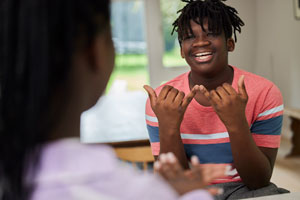 If you want to get involved with the Deaf community, there is no reason not to. Deaf people spend their lives marginalized by the hearing majority culture, so taking the initiative to form a connection is generally appreciated. Start by practicing your ASL and learning about the different methods of deaf-hearing communication, which will lessen any anxiety about engaging new people. Educate yourself on Deaf issues, understand what it means to be an ally, and attend an upcoming event in your area. Then just find a friendly face in the room, and strike up a conversation!
If you want to get involved with the Deaf community, there is no reason not to. Deaf people spend their lives marginalized by the hearing majority culture, so taking the initiative to form a connection is generally appreciated. Start by practicing your ASL and learning about the different methods of deaf-hearing communication, which will lessen any anxiety about engaging new people. Educate yourself on Deaf issues, understand what it means to be an ally, and attend an upcoming event in your area. Then just find a friendly face in the room, and strike up a conversation!
If you are in an interpreter training program and looking for ways to get involved with the Deaf community, consider mentoring through LC Interpreting Services. Our mentorship programs are individually designed to offer exactly what you need to feel confident as an intepreter, from strengthening skills to providing guidance, and everything in between!
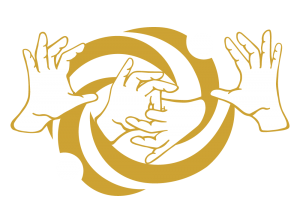

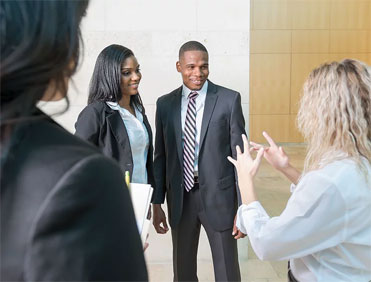

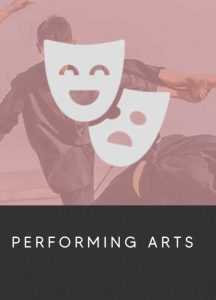
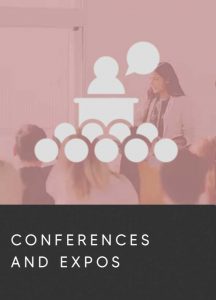
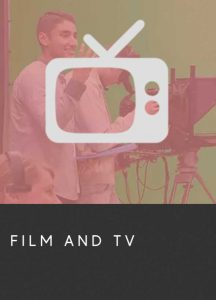
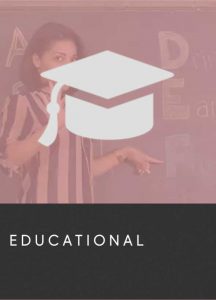
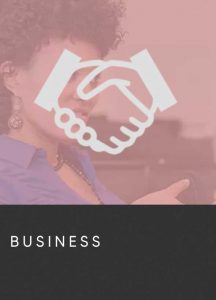

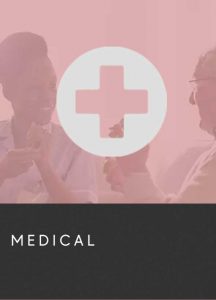
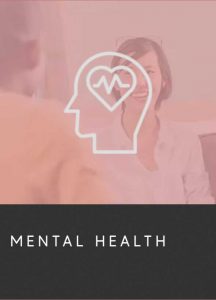
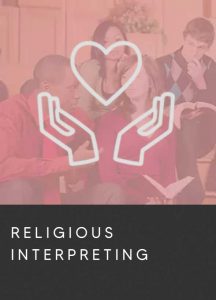
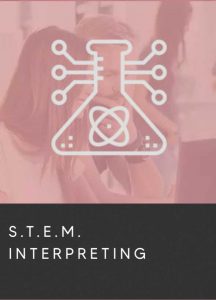
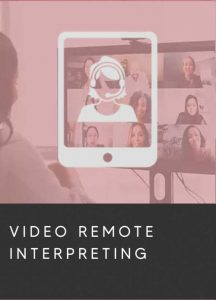
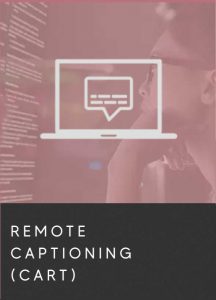

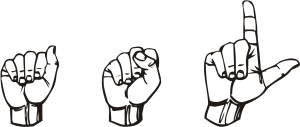 What is American Sign Language? Is it a culture? Is it an identity? Is it a foreign language? Is it an art form? Is it for Deaf people only? ASL fills a variety of roles in different people’s lives, but most importantly: it is a communication tool. ASL is emotional expression, it is connection; it is a way for humans to build meaningful relationships.
What is American Sign Language? Is it a culture? Is it an identity? Is it a foreign language? Is it an art form? Is it for Deaf people only? ASL fills a variety of roles in different people’s lives, but most importantly: it is a communication tool. ASL is emotional expression, it is connection; it is a way for humans to build meaningful relationships.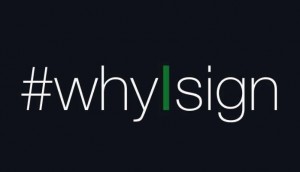 Last month Stacy Abrams, a Family Mentor Program Coordinator at Arizona Schools for the Deaf/Blind and the Arizona Early Intervention Program, launched the viral video campaign called Why I Sign
Last month Stacy Abrams, a Family Mentor Program Coordinator at Arizona Schools for the Deaf/Blind and the Arizona Early Intervention Program, launched the viral video campaign called Why I Sign 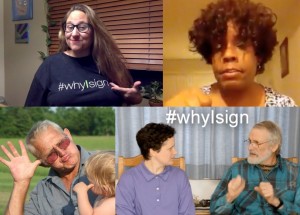 #WhyISign was so powerful because of the community pride it generated and the incredible diversity of ASL users that it showcased. The campaign also brought an important issue to the forefront: giving deaf children access to signed languages.
#WhyISign was so powerful because of the community pride it generated and the incredible diversity of ASL users that it showcased. The campaign also brought an important issue to the forefront: giving deaf children access to signed languages. Language Equality and Acquisition for Deaf Kids (LEAD-K) is a national campaign by
Language Equality and Acquisition for Deaf Kids (LEAD-K) is a national campaign by 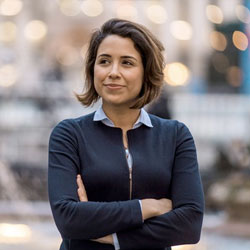 In October of 2012, following the Hurricane Sandy press conferences, I was stunned to find YouTube clips of myself interpreting for NYC Mayor Michael Bloomberg spreading across social media. I assure you that becoming a viral video is not something any person can prepare for— it was overwhelming and quite disillusioning. When all was said and done, the biggest lesson I took away from the experience is that mainstream hearing society knows next to nothing about deafness, Deaf culture, American Sign Language, or ASL interpreters. I realized that the media exposure afforded an opportunity to help bring more attention to these topics, and this has been a primary focus of my life ever since.
In October of 2012, following the Hurricane Sandy press conferences, I was stunned to find YouTube clips of myself interpreting for NYC Mayor Michael Bloomberg spreading across social media. I assure you that becoming a viral video is not something any person can prepare for— it was overwhelming and quite disillusioning. When all was said and done, the biggest lesson I took away from the experience is that mainstream hearing society knows next to nothing about deafness, Deaf culture, American Sign Language, or ASL interpreters. I realized that the media exposure afforded an opportunity to help bring more attention to these topics, and this has been a primary focus of my life ever since.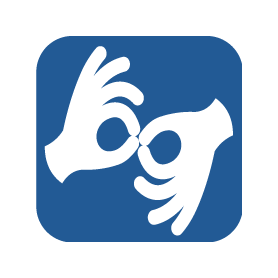 Not only do I strive to educate through my writing, but also through my company. I work with hearing businesses all the time to help make their organization more culturally competent for deaf employees and customers. LCIS makes the process of securing interpreters comprehensive and we offer literature on working with both deaf individuals and sign language interpreters. By working very closely with deaf consumers, we assess the needs of the individual and help advocate for any accommodations that they feel are necessary. Deaf interpreters are assigned whenever possible and we make sure to educate organizations about their importance. At LCIS, our ASL instructors are Deaf, as are the corporate Cultural Competency trainers, and any ASL coaches who work on film or TV sets that feature deafness or sign language. We could not do any of the work that we do without deaf people!
Not only do I strive to educate through my writing, but also through my company. I work with hearing businesses all the time to help make their organization more culturally competent for deaf employees and customers. LCIS makes the process of securing interpreters comprehensive and we offer literature on working with both deaf individuals and sign language interpreters. By working very closely with deaf consumers, we assess the needs of the individual and help advocate for any accommodations that they feel are necessary. Deaf interpreters are assigned whenever possible and we make sure to educate organizations about their importance. At LCIS, our ASL instructors are Deaf, as are the corporate Cultural Competency trainers, and any ASL coaches who work on film or TV sets that feature deafness or sign language. We could not do any of the work that we do without deaf people! So you’re interested in Deaf culture and want to connect with the larger community. Great! But how do you go about taking that first step?
So you’re interested in Deaf culture and want to connect with the larger community. Great! But how do you go about taking that first step? The internet has given deaf people a public voice like never before! From online discussions you can get a feel for the tones people use to communicate with each other, the types of things they find funny, and what issues they find important. Like and share content created by deaf individuals to amplify their voices, and don’t be afraid to follow new people and jump in on discussions if you have something to contribute. Help bring attention to issues that are “hot topics” or in need of support. Pay attention to what is being discussed, what rumors are going around, and what events are coming up in your area.
The internet has given deaf people a public voice like never before! From online discussions you can get a feel for the tones people use to communicate with each other, the types of things they find funny, and what issues they find important. Like and share content created by deaf individuals to amplify their voices, and don’t be afraid to follow new people and jump in on discussions if you have something to contribute. Help bring attention to issues that are “hot topics” or in need of support. Pay attention to what is being discussed, what rumors are going around, and what events are coming up in your area. If meeting people off the internet isn’t up your alley, there are plenty of other options to connect with the Deaf community. Try Google searching for a Deaf coffee chat or Deaf club in your city. If you live near Rochester, NY, check out the National Technical Institute of the Deaf (NTID) campus. Or, if you live near Washington, DC, look for events at Gallaudet University. Don’t be afraid to reach out to local deaf organizations or the local interpreter training program for more information, you will find that most people are happy to help.
If meeting people off the internet isn’t up your alley, there are plenty of other options to connect with the Deaf community. Try Google searching for a Deaf coffee chat or Deaf club in your city. If you live near Rochester, NY, check out the National Technical Institute of the Deaf (NTID) campus. Or, if you live near Washington, DC, look for events at Gallaudet University. Don’t be afraid to reach out to local deaf organizations or the local interpreter training program for more information, you will find that most people are happy to help. If you are training to be an ASL interpreter, sign up with your local RID chapter. It helps to not only be connected with the Deaf community, but also to participate in the Interpreting community. Learn about upcoming workshops and events. Meet other interpreters from all backgrounds, expertise, and experience levels. If anyone understands how scary it can be to push yourself outside your comfort zone, it’s others who work in this field.
If you are training to be an ASL interpreter, sign up with your local RID chapter. It helps to not only be connected with the Deaf community, but also to participate in the Interpreting community. Learn about upcoming workshops and events. Meet other interpreters from all backgrounds, expertise, and experience levels. If anyone understands how scary it can be to push yourself outside your comfort zone, it’s others who work in this field. If you want to get involved with the Deaf community, there is no reason not to. Deaf people spend their lives marginalized by the hearing majority culture, so taking the initiative to form a connection is generally appreciated. Start by practicing your ASL and learning about the different methods of deaf-hearing communication, which will lessen any anxiety about engaging new people. Educate yourself on Deaf issues, understand what it means to be an ally, and attend an upcoming event in your area. Then just find a friendly face in the room, and strike up a conversation!
If you want to get involved with the Deaf community, there is no reason not to. Deaf people spend their lives marginalized by the hearing majority culture, so taking the initiative to form a connection is generally appreciated. Start by practicing your ASL and learning about the different methods of deaf-hearing communication, which will lessen any anxiety about engaging new people. Educate yourself on Deaf issues, understand what it means to be an ally, and attend an upcoming event in your area. Then just find a friendly face in the room, and strike up a conversation! This holiday season, try to imagine what it would be like if no one sitting around the dinner table took any interest in getting to know you. What if no one in your family asked about your life, or seemed to care how you were doing? Picture how the holidays would be different if you were excluded from the stories, the jokes, and the games that your family shares.
This holiday season, try to imagine what it would be like if no one sitting around the dinner table took any interest in getting to know you. What if no one in your family asked about your life, or seemed to care how you were doing? Picture how the holidays would be different if you were excluded from the stories, the jokes, and the games that your family shares. As a CODA (Child of Deaf Adults), I spent many family events doing the best I could to provide my Deaf mother and siblings with access to conversations. CODAs often fall into the role of interpreter for deaf family members, and we usually don’t mind doing it. But one person can not realistically provide full access to communication when there are multiple deaf and hearing parties. Additionally, a person who is involved in the social dynamics of the family can not facilitate communication in an impartial way. For example a CODA might alter one family member’s actual message to avoid hurting another relative’s feelings.
As a CODA (Child of Deaf Adults), I spent many family events doing the best I could to provide my Deaf mother and siblings with access to conversations. CODAs often fall into the role of interpreter for deaf family members, and we usually don’t mind doing it. But one person can not realistically provide full access to communication when there are multiple deaf and hearing parties. Additionally, a person who is involved in the social dynamics of the family can not facilitate communication in an impartial way. For example a CODA might alter one family member’s actual message to avoid hurting another relative’s feelings. For my deaf family members, holiday events were always pretty boring. Any conversations they did have with hearing family members were limited and generally basic. So last year, for my mother’s birthday, I
For my deaf family members, holiday events were always pretty boring. Any conversations they did have with hearing family members were limited and generally basic. So last year, for my mother’s birthday, I 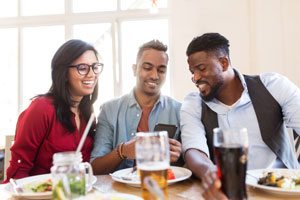 But for my mother, a whole lifetime of feeling excluded could not be erased in one day. While she appreciated the way the interpreters connected the family, it was hard to make up for all the family gatherings spent as an outsider. At the end of the party, everyone kept asking “why haven’t we hired interpreters before?” It hadn’t occurred to them what a big difference the ability to truly communicate would make.
But for my mother, a whole lifetime of feeling excluded could not be erased in one day. While she appreciated the way the interpreters connected the family, it was hard to make up for all the family gatherings spent as an outsider. At the end of the party, everyone kept asking “why haven’t we hired interpreters before?” It hadn’t occurred to them what a big difference the ability to truly communicate would make. When you provide professional interpreters, you actively welcome your deaf relatives into a hearing space.You invite them into your family– all the laughs and debates and reminiscing that bond us with our kin. Providing communication access for deaf relatives sends a clear message that their participation is valued. It was such a joy to watch my deaf siblings and little nieces get to know my hearing aunts, breaking through generations of communication barriers, making real connections. It’s hard to believe they all went so long without sharing these moments!
When you provide professional interpreters, you actively welcome your deaf relatives into a hearing space.You invite them into your family– all the laughs and debates and reminiscing that bond us with our kin. Providing communication access for deaf relatives sends a clear message that their participation is valued. It was such a joy to watch my deaf siblings and little nieces get to know my hearing aunts, breaking through generations of communication barriers, making real connections. It’s hard to believe they all went so long without sharing these moments!
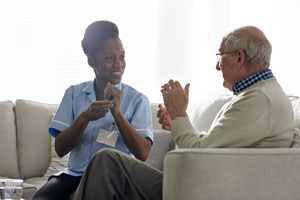 Last thing you remember, you were walking down the street; now you are lying in a hospital bed. The lights are so bright, you can barely see, and your whole body is in pain. You try asking for assistance, but none of the medical staff can understand you, because none of them communicate by using ASL. They hand you some paperwork and ask you to write your questions on a note pad, but all you want is a conversation. What happened to you? How did you get here? What are you supposed to do now?
Last thing you remember, you were walking down the street; now you are lying in a hospital bed. The lights are so bright, you can barely see, and your whole body is in pain. You try asking for assistance, but none of the medical staff can understand you, because none of them communicate by using ASL. They hand you some paperwork and ask you to write your questions on a note pad, but all you want is a conversation. What happened to you? How did you get here? What are you supposed to do now?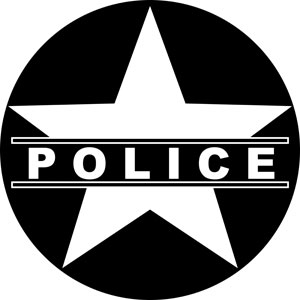 As eager as a CODA might be to step up to help their family member, they often lack the medical, technical, or legal knowledge to deliver the news they are being asked to deliver. Medical professionals learn to explain diagnoses in a sensitive manner, because the terminology is complex, and often you are receiving very emotional news. Police and civil servants are trained to communicate with frightened or confused victims. CODAs are generally not equipped to explain medication regimens or legal charges to a family member, especially in a crisis situation. They should not be expected to provide this service simply because they are bilingual.
As eager as a CODA might be to step up to help their family member, they often lack the medical, technical, or legal knowledge to deliver the news they are being asked to deliver. Medical professionals learn to explain diagnoses in a sensitive manner, because the terminology is complex, and often you are receiving very emotional news. Police and civil servants are trained to communicate with frightened or confused victims. CODAs are generally not equipped to explain medication regimens or legal charges to a family member, especially in a crisis situation. They should not be expected to provide this service simply because they are bilingual.





